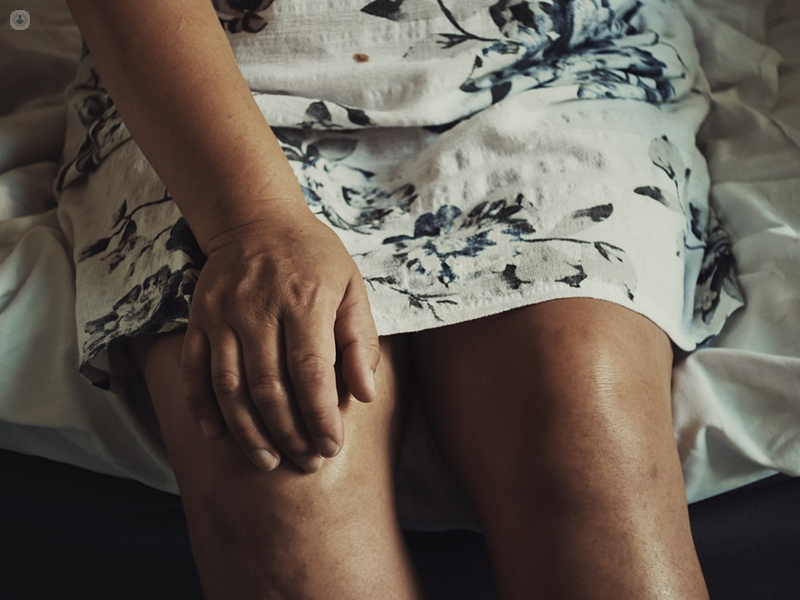Who should have a partial knee replacement?
Escrito por:A partial knee replacement, as the name suggests, replaces only the affected part of the knee that needs to be replaced, rather than replacing all three parts, as is the case with a total knee replacement. It has many benefits, but it is not suitable for everyone. We interviewed orthopaedic surgeon Mr Mark Dunbar to find out more about a partial knee replacement.
A partial knee replacement is suitable for anyone with osteoarthritis of the knee, that’s mainly confined to just one compartment. Even though many patients are suitable for partial knee replacements, they are not always offered it because it sometimes doesn’t fall within all surgeons operative portfolios. Currently, only about 7% of patients in the UK undergo a partial knee replacement, even though many more are suitable for the surgery.

What criteria are required to have a partial knee replacement?
To have a partial knee replacement, the patient needs to have a functioning knee with intact internal ligaments and the rest of the knee needs to be in reasonable condition. Problems can arise if patients that aren’t suitable for a partial knee replacement undergo the surgery. Age is not a factor that comes into play.
Who shouldn’t have a partial knee replacement?
People with excessive stiffness and arthritis that affects more than one compartment shouldn’t have a partial knee replacement.
How successful is a partial knee replacement?
In the right surgeon’s hands, the revision rates of partial knee replacements are similar to total knee replacements. It’s important to note that there are higher complication rates in surgeons that only do a small number of partial knee replacements, so when choosing a surgeon, it’s best to choose one that does them regularly.
What are the pros of a partial knee replacement?
Partial knee replacements have the following advantages:
- Faster recovery; patients should be able to walk and move on the day of surgery
- Shorter stay in hospital; patients can be discharged one to three days after the surgery, or in some cases even on the same day
- Smaller incision
- Patients keep their own internal ligaments
- Knee moves and feels more natural
- Risk of medical complications is much lower than the medical risks associated with a total knee replacement, which means it can be a safer operation for patients who have other medical problems
How soon can I drive after a partial knee replacement?
Patients can normally drive between four and six weeks after a partial knee replacement.
Will I be able to perform sports after my surgery?
Many people return to sports after a partial knee replacement, however, high impact activities are not advised. Exercise can be taken up six to 12 weeks after surgery, depending on how the healing process goes. Activities like golf and tennis are better than high impact exercises. Patients need to remember that the replacement joint is artificial and so it’s possible to wear it out.
What advice do you have for a speedy recovery?
The best thing to do to have a speedy recovery is actually to have pre-habilitation to get your muscles in shape before the surgery takes place. This can be done with physiotherapy and exercises. Of course, rehabilitation after surgery is also beneficial and is often supervised for about six weeks following surgery.
If you would like more information regarding partial knee replacements, contact Mr Mark Dunbar via his Top Doctors profile.


